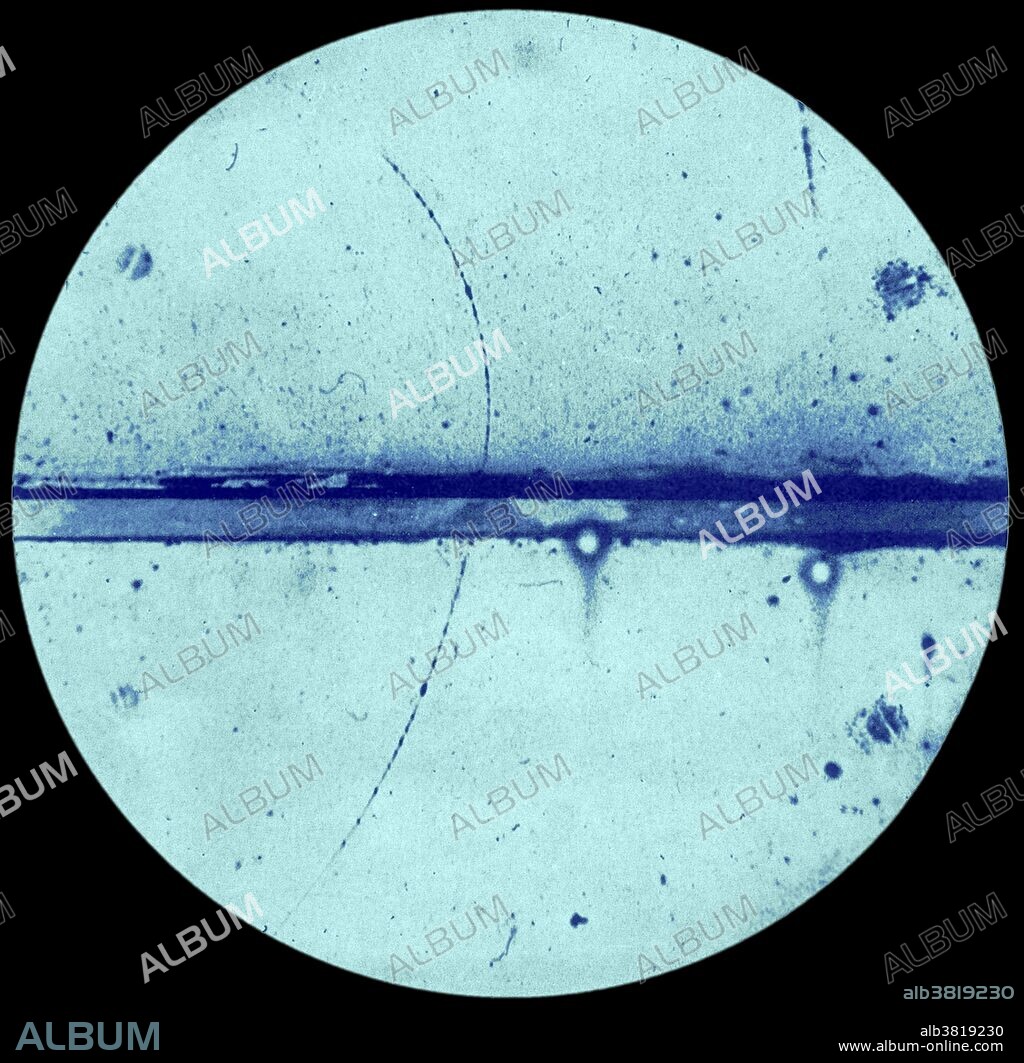alb3819230
Discovery of the Positron, 1932

|
Añadir a otro lightbox |
|
Añadir a otro lightbox |



¿Ya tienes cuenta? Iniciar sesión
¿No tienes cuenta? Regístrate
Compra esta imagen.
Selecciona el uso:

Título:
Discovery of the Positron, 1932
Descripción:
Traducción automática: Primera evidencia de la existencia de una antipartícula de un solo rastro de positrón del electrón del Instituto Tecnológico de California; Cámara de Nubes; aportada por la foto de CD Anderson, 1932. Carl David Anderson (3 de septiembre de 1905 - 11 de enero de 1991) fue un físico estadounidense. Bajo la supervisión de Robert Millikan, comenzó a investigar los rayos cósmicos durante el curso de las cuales encontró rastros de partículas inesperados en sus fotografías de la cámara de nubes que interpretó correctamente como creados por una partícula con la misma masa que el electrón, pero con carga eléctrica opuesta. Este descubrimiento, anunciado en 1932 y confirmado posteriormente por otros, validó la predicción teórica de Paul Dirac sobre la existencia del positrón. Por este trabajo, Anderson compartió el Premio Nobel de Física de 1936 con Victor Hess. También en 1936, Anderson y su primer estudiante de posgrado, Seth Neddermeyer, descubrieron el muón (mesón mu), una partícula subatómica 207 veces más masiva que el electrón, pero con la misma carga eléctrica negativa y espín 1/2 que el electrón, también en rayos cósmicos. Pasó toda su carrera académica y de investigación en Caltech. Murió en 1991 a la edad de 85 años.
First evidence existence of positron single track antiparticle of electron from California Institute of Technology; Cloud Chamber; adduced by C.D. Anderson's photo, 1932. Carl David Anderson (September 3, 1905 - January 11, 1991) was an American physicist. Under the supervision of Robert Millikan, he began investigations into cosmic rays during the course of which he encountered unexpected particle tracks in his cloud chamber photographs that he correctly interpreted as having been created by a particle with the same mass as the electron, but with opposite electrical charge. This discovery, announced in 1932 and later confirmed by others, validated Paul Dirac's theoretical prediction of the existence of the positron. For this work, Anderson shared the 1936 Nobel Prize in Physics with Victor Hess. Also in 1936, Anderson and his first graduate student, Seth Neddermeyer, discovered the muon (mu-meson), a subatomic particle 207 times more massive than the electron, but with the same negative electric charge and spin 1/2 as the electron, again in cosmic rays. He spent all of his academic and research career at Caltech. He died in 1991 at the age of 85.
Crédito:
Album / Science Source
Autorizaciones:
Modelo: No - Propiedad: No
¿Preguntas relacionadas con los derechos?
¿Preguntas relacionadas con los derechos?
Tamaño imagen:
4200 x 4141 px | 49.8 MB
Tamaño impresión:
35.6 x 35.1 cm | 14.0 x 13.8 in (300 dpi)
Palabras clave:
1930S • 1932 • ACONTECIMIENTO • ANDERSON • CIENCIA • COLOREADA • DESCUBRIMIENTO • FAMOSA • FAMOSO • FÍSICA (CIENCIA) • FÍSICA DE PARTÍCULAS • FÍSICO (CIENTIFICO) • GANADOR DEL PREMIO NOBEL • HISTORIA • HISTORICO • IMPORTANTE • PREMIO NOBEL • S. XX • SIGLO XX
 Pinterest
Pinterest Twitter
Twitter Facebook
Facebook Copiar enlace
Copiar enlace Email
Email
